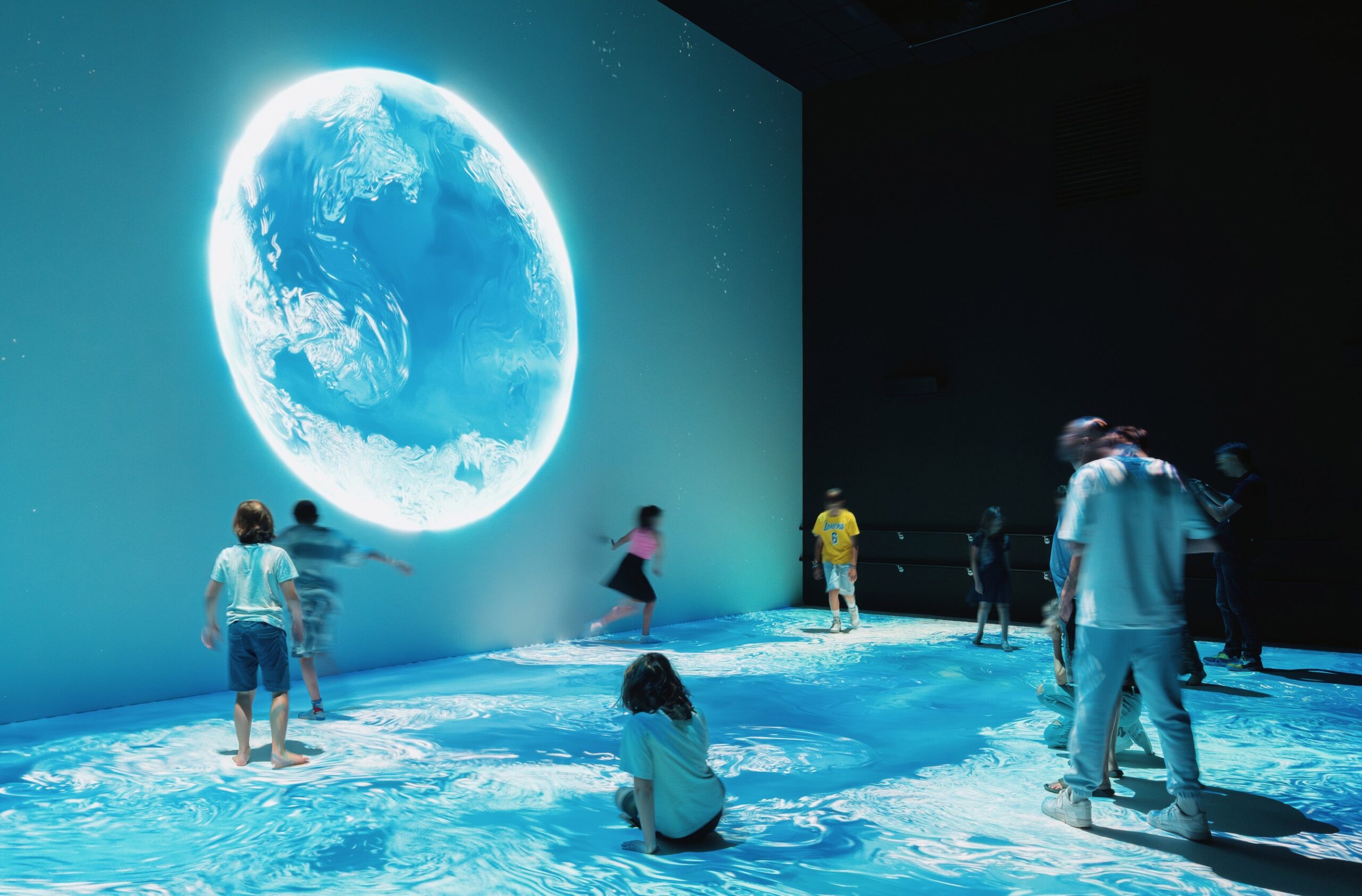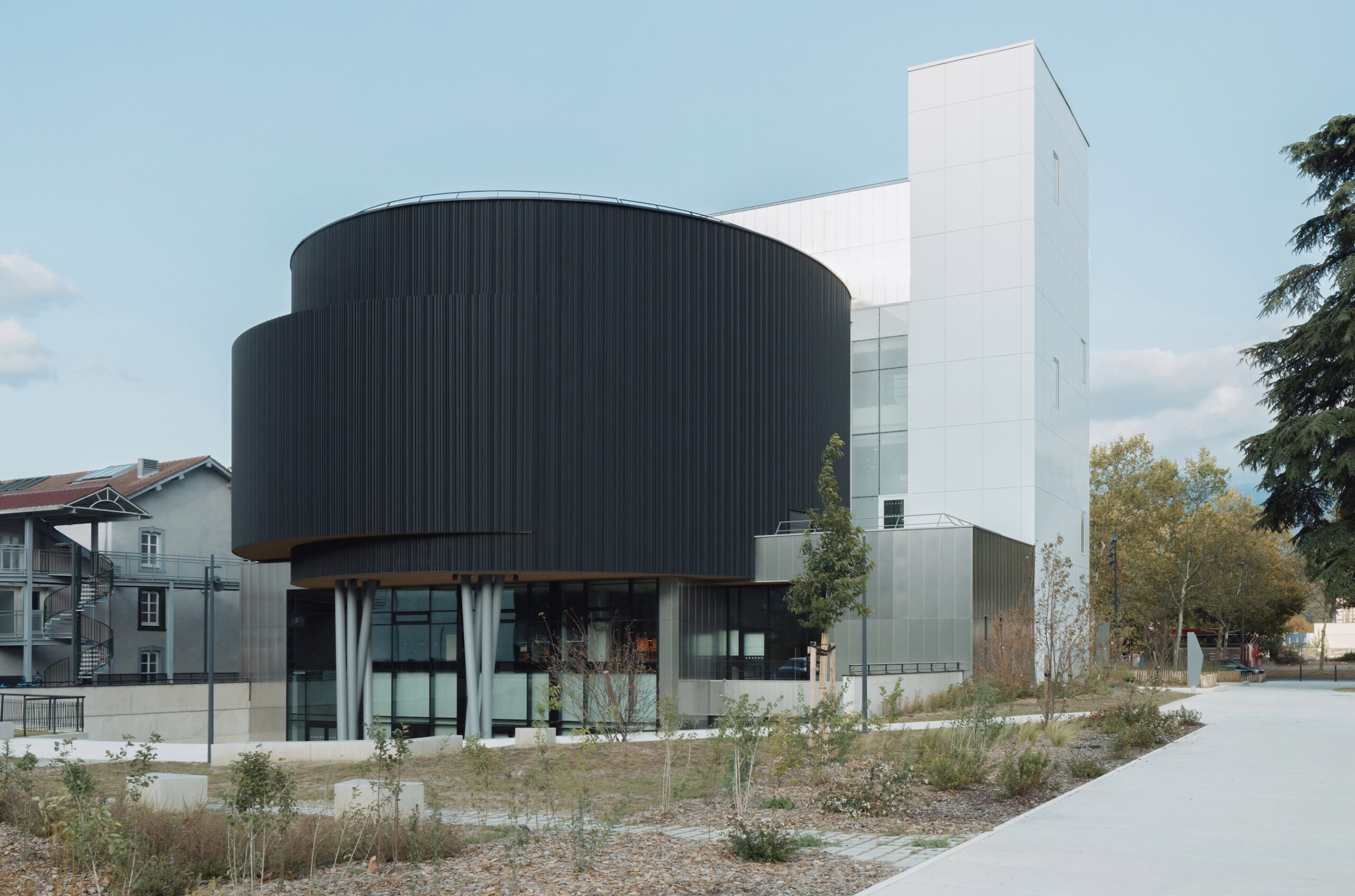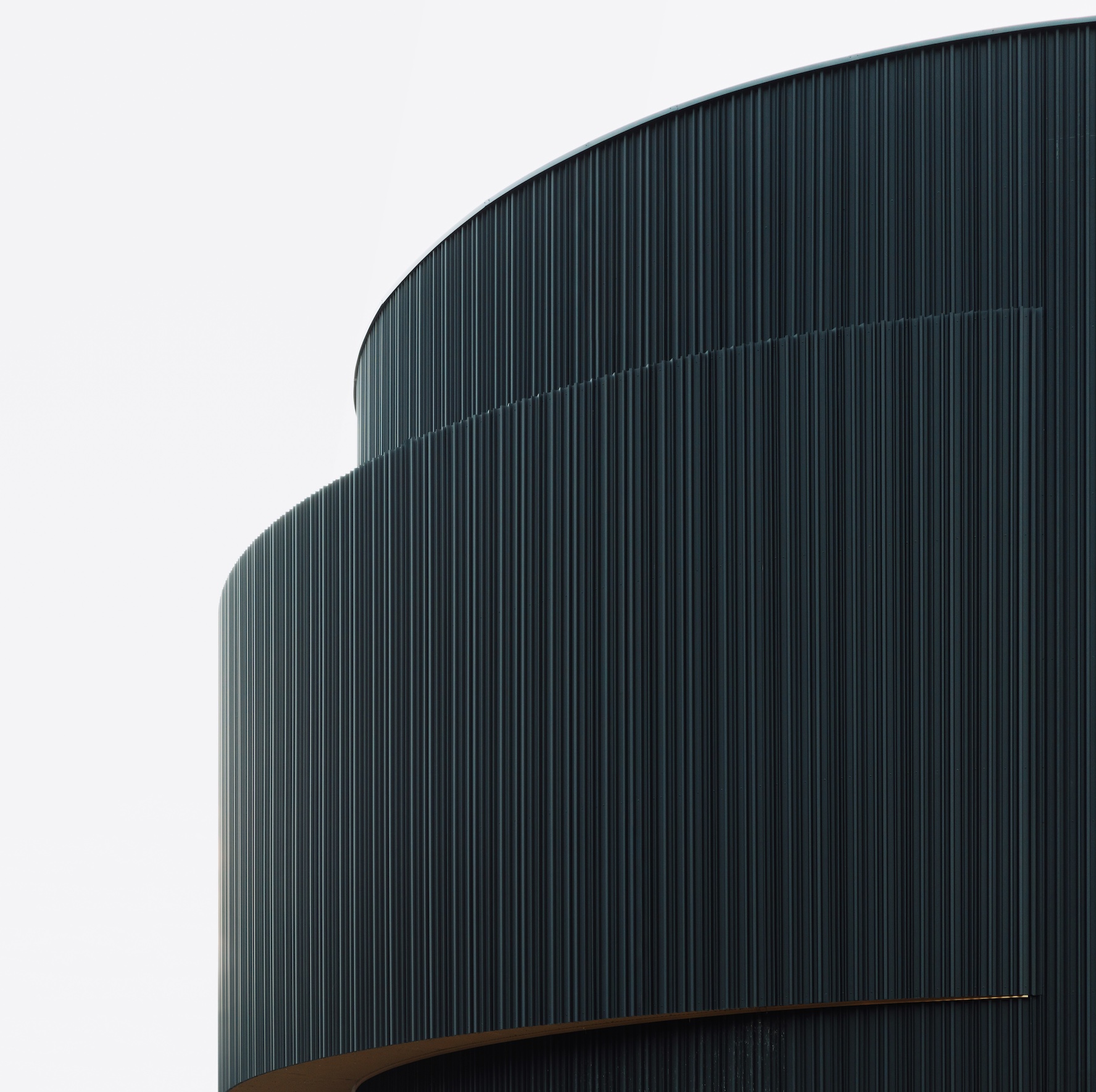Built on the Grands Moulins de Villancourt heritage site in France, the contemporary Centre de sciences Cosmocité aims to be the cultural cornerstone of Ville de Pont-de-Claix’s urban renewal
 Photography by Nicolas Trouillard
Photography by Nicolas Trouillard
Architects Jean-Yves Guibourdenche and Jean-François Julien have unveiled their design for the new Centre de sciences Cosmocité, which has opened in Pont-de-Claix, a commune in the Isère department in southeastern France.
In line with the museum concept developed by scenographer CREO, and in close collaboration with cultural centre La Casemate and the wider scientific community, the building aims to preserve the memory of the Grands Moulins de Villancourt site, an important part of the municipalities of Echirolles and Pont-de-Claix in the 19th and 20th centuries.
Taking up the exact layout of the demolished building, which could not be reused, the architects created two distinct volumes – one rectangular white volume and a sweeping, black curve – link the region’s industrial past with the contemporary scientific focus of the new institution.
 Photography by Nicolas Trouillard
Photography by Nicolas Trouillard
The glossy white section of the building houses the passageways and related spaces, while the centre’s opaque black volume houses spaces dedicated to the dissemination of scientific content: the planetarium, immersion room and permanent exhibition hall.
Finding inspiration in the universe’s great mysteries and humankind’s place in the cosmos, the black volume’s monolithic, dark, and mysterious quality invites onlookers to reflect. Inside, the vertical and horizontal corridors are bathed in natural light, and offer views of the surrounding landscape.
Meanwhile, the circular planetarium is inclined at 10°, and can be accessed via a waiting area. With a capacity of 80, including 4 for people with reduced mobility, it is equipped with reclining seats, and provides a 360° view of a semi-spherical screen.
 Photography by Nicolas Trouillard
Photography by Nicolas Trouillard
The architectural team called on the Montreal-based digital studio CREO to create the Cosmocité scenography. To meet the numerous requirements of this ambitious project, CREO put together a multidisciplinary design team, who worked in close collaboration with the project’s Grenoble-based scientific committee, as well as with Centre de Culture Scientifique, Technique et Industrielle de Grenoble.
Cosmocité’s highly interactive exhibition is designed to answer fundamental questions such as: Is the Earth unique? Is it possible to predict everything? Spread over two floors, it covers a variety of topics, from the birth of stars to the causes of earthquakes.
Get a curated collection of design and architecture news in your inbox by signing up to our ICON Weekly newsletter
















